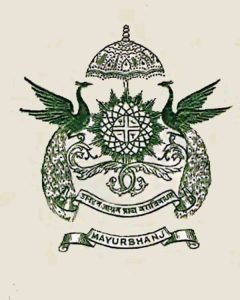Mayurbhanj occupies a unique position being endowed with lush green vegetation, different fauna and rich cultural heritage. The district has a rich mineral base and is home to the Similipal Biosphere. Iron-ore (hematite), vanadiferous and titaniferous magnetic, chaina clay, galena (lead ore), Kyanite, asbestos, steatite (soap stone) and quartzite constitute the principal mineral resources of Mayurbhanj district, of these the iron-ore deposits of Gorumahisani, Badampahar and Suleipat, which have been exploited for a period of about half a century, deserve special mention.

The rulers of the Bhanja dynasty continued to rule over this State in unbroken succession since about the 9th century A.D. The name of the State under the early Bhanja rulers was Khijjinga Mandala named after the Capital Khijjinga Kotta. The copper plate inscription issued by those rulers indicate that Khijjinga Mandala was an extensive territory comprising the present Mayurbhanj and Keonjhar districts as well as parts of Singhbhum district in Bihar and Medinapur district in West Bengal. During the Moghul Period, the territory of Bhanja rulers extended as far as the sea. By that time, the capital had shifted from Khijjinga Kotta to Haripur.
The Kings of Mayurbhanj were pioneering force in the upliftment of Odisha under British rule. In fact, it was one of the most progressive districts in the whole nation during the British rule. The Bhanja kings established the first Medical college of the state in Cuttack. They donated huge sum of money and land for establishment of higher educational institutions like Ravenshaw College. They were also responsible for making endeavors and finally persuading the Britishers for a railway route to Odisha. The Mayurbhanj state got merged in the state of Odisha on 1st January 1949. Since the date of its merger Mayurbhanj has been organized and is administered as one of the districts of Odisha.







